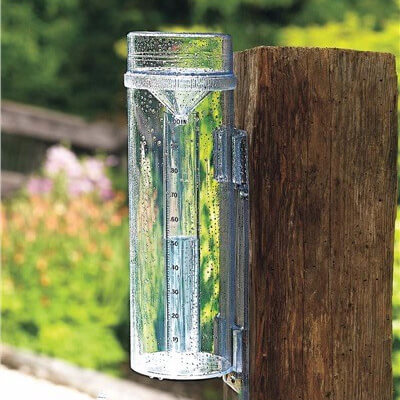How to Pick the Right Rain Gauge for Reliable Precipitation Monitoring
How to Pick the Right Rain Gauge for Reliable Precipitation Monitoring
Blog Article
Introducing the Scientific Research Behind Rain Evaluates: Exactly How These Devices Play a Vital Duty in Climate Study and Environmental Surveillance
Rainfall gauges, seemingly straightforward devices, hold a profound value in the world of climate research study and ecological tracking. These simple tools quietly gather among nature's most crucial elements-- rainfall. Yet, behind their unpretentious facade exists a complicated scientific research that is essential for comprehending the characteristics of our atmosphere. As we peel off back the layers of this scientific shroud surrounding rainfall evaluates, we uncover a globe where precision, data accuracy, and meticulous monitoring converge to unveil a much deeper understanding of our altering environment and its influence on the planet.
Relevance of Rainfall Gauges
Rain gauges play a crucial function in tracking and determining precipitation levels, offering important information for environment research study and analysis. These devices are fundamental in quantifying the quantity of rainfall that happens in a particular area over a certain period. By gauging and gathering rainwater, rainfall evaluates deal useful insights right into the distribution and intensity of rainfall, helping meteorologists, hydrologists, and climatologists in understanding climate patterns and patterns.
Additionally, lasting data collected from rain evaluates assists in assessing environment change impacts and patterns, contributing considerably to clinical research study and decision-making procedures. In significance, rainfall assesses offer as crucial devices in the area of weather forecasting and environmental science, playing an essential function in advancing our understanding of weather and environment dynamics.
Types of Rainfall Gauges

Capability and Operation
In the realm of climate research and atmospheric research studies, the effectiveness of rain evaluates lies in their intricate capability and accurate operational devices. Rain gauges are developed to properly measure the amount of precipitation that tips over a details area during a collection period. These devices commonly include a channel that accumulates rainwater and networks it into a measuring tube. The determining tube is marked with adjusted measurements that permit the exact quantification of rains.
The capability of rain assesses is based on the principle of gauging and accumulating rain in a standardized fashion. This collected data is crucial for understanding local weather condition patterns, tracking lasting environment fads, and examining environmental influences. To make sure exact dimensions, rainfall assesses need to be strategically positioned in open locations far from blockages such as structures or trees that could disrupt the collection procedure.
The operational facet of rainfall determines entails routine maintenance to avoid particles accumulation, calibration checks to maintain dimension precision, and information recording for evaluation (rain gauge). Overall, the performance and procedure of rainfall assesses are necessary for collecting trustworthy rainfall data crucial to climate research study and ecological monitoring
Duty in Climate Study
Given the critical value of precise rainfall dimensions in understanding weather patterns and ecological impacts, the duty of rainfall assesses in climate research study is important. Rain gauges supply vital data for climate research by evaluating the quantity of rainfall that tips over a certain location throughout a given duration. This information is essential for keeping an eye on look at this website lasting fads in precipitation patterns, examining the influence of environment adjustment on rains distribution, and enhancing climate versions.

Climate scientists utilize information gathered from rain determines to evaluate variants in rainfall levels, identify regional environment patterns, and examine the efficiency of water source administration strategies. By contrasting historic precipitation data with existing measurements, researchers can discover shifts in precipitation patterns, such as modifications in the frequency or strength of rains events. This details is vital for understanding just how climate adjustment is influencing precipitation characteristics and can assist policymakers make informed decisions pertaining to adjustment and mitigation techniques.
Applications in Ecological Tracking

In flood forecasting, rain scale data helps to track rains intensity and distribution, enabling authorities to issue navigate to this website timely warnings and take required actions to reduce flooding dangers (rain gauge). Dry spell monitoring counts on rain gauge data to examine wetness levels in the soil and track rainfall deficits, assisting in the identification of drought-prone locations and the implementation of drought feedback strategies
Moreover, rain scale data plays a crucial function in water source management by supplying information on water accessibility and use trends. This information is made use of to make informed choices pertaining to water allocation, preservation actions, and sustainable water source preparation. Furthermore, in agriculture, rainfall gauge information aids farmers in enhancing watering timetables, crop selection, and general ranch monitoring practices based upon regional precipitation patterns. On the whole, rain determines are indispensable tools in environmental tracking, supplying beneficial insights that add to informed decision-making and lasting resource monitoring.
Verdict
Finally, rain determines are necessary devices for determining precipitation, supplying valuable data for environment research study and environmental tracking. With numerous kinds and functionalities, rain evaluates play an important function in understanding precipitation patterns and their effect on the atmosphere. By precisely gauging rains, these tools add to the advancement of clinical understanding and assistance in making informed choices related to water source monitoring and disaster preparedness.
Rainfall assesses play a vital function in monitoring and gauging rainfall degrees, offering crucial data for environment research study and evaluation. find out The typical rainfall scale, known as the "tipping pail" gauge, is one of the most commonly used devices. Ultrasonic rainfall assesses use noise waves to detect the presence of rainfall, supplying real-time data on rainfall degrees.Climate scientists make use of data collected from rainfall assesses to analyze variants in precipitation levels, recognize regional environment fads, and review the effectiveness of water resource administration methods.In conclusion, rainfall assesses are vital devices for measuring rainfall, providing beneficial information for climate study and environmental tracking.
Report this page